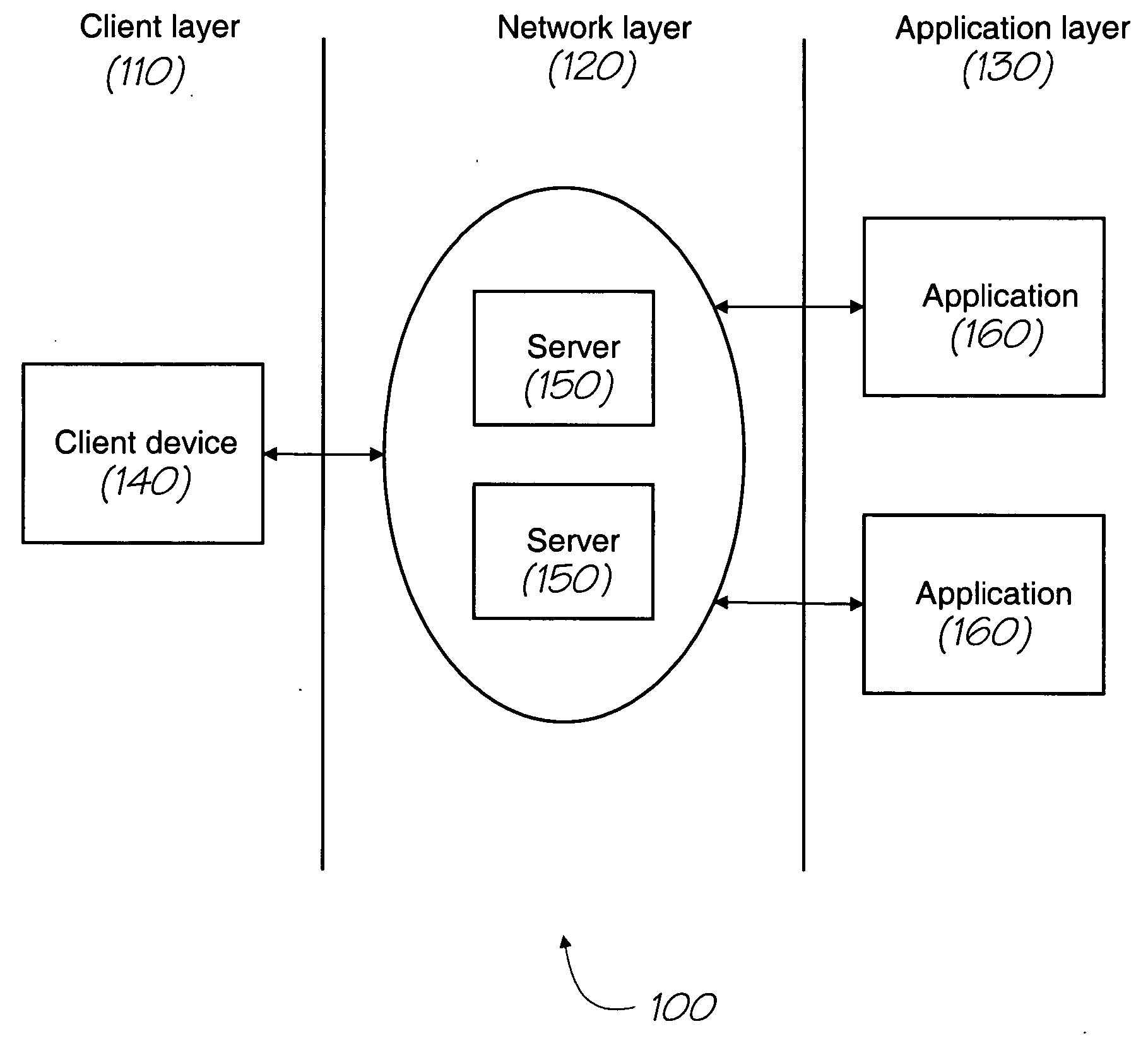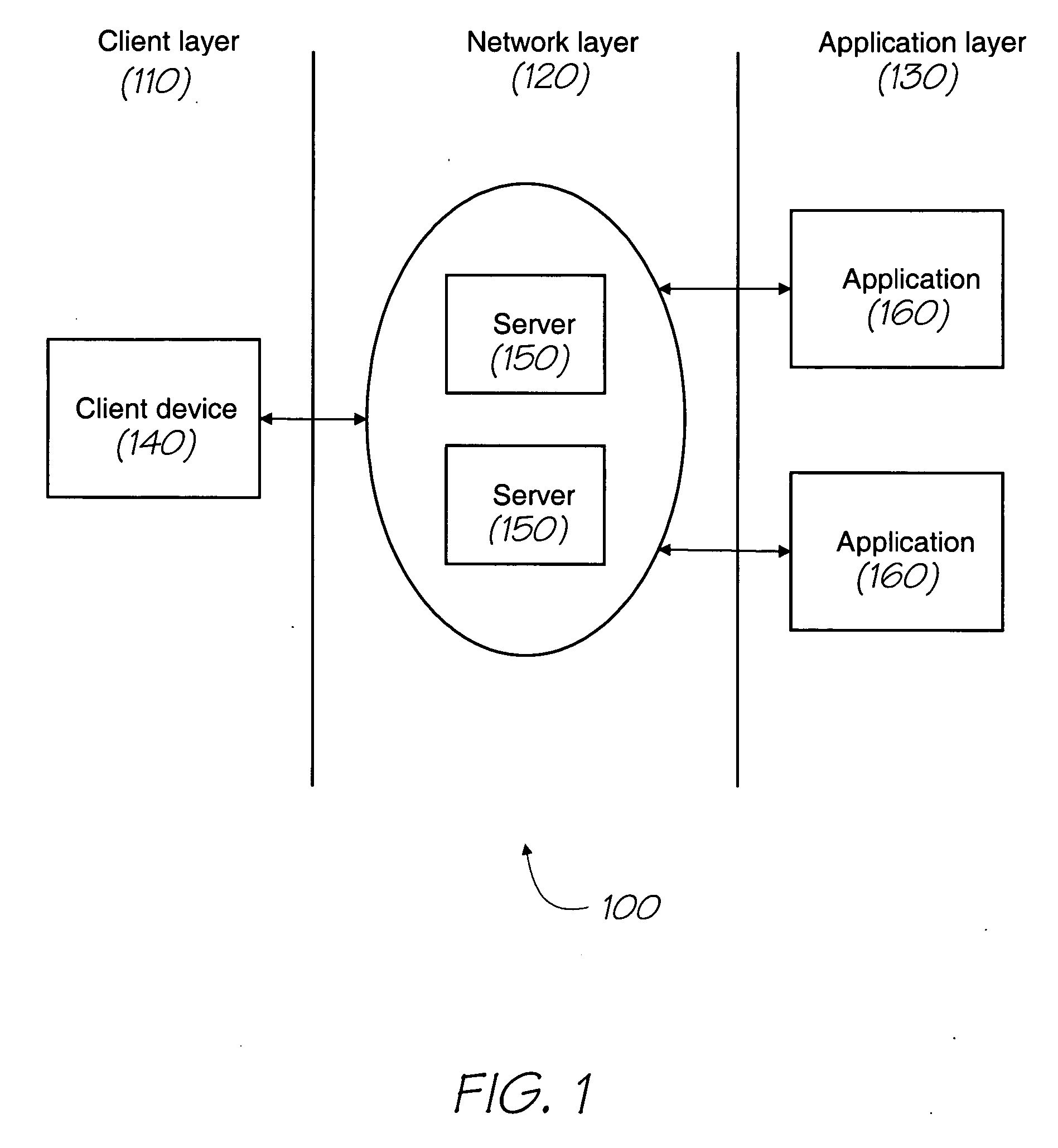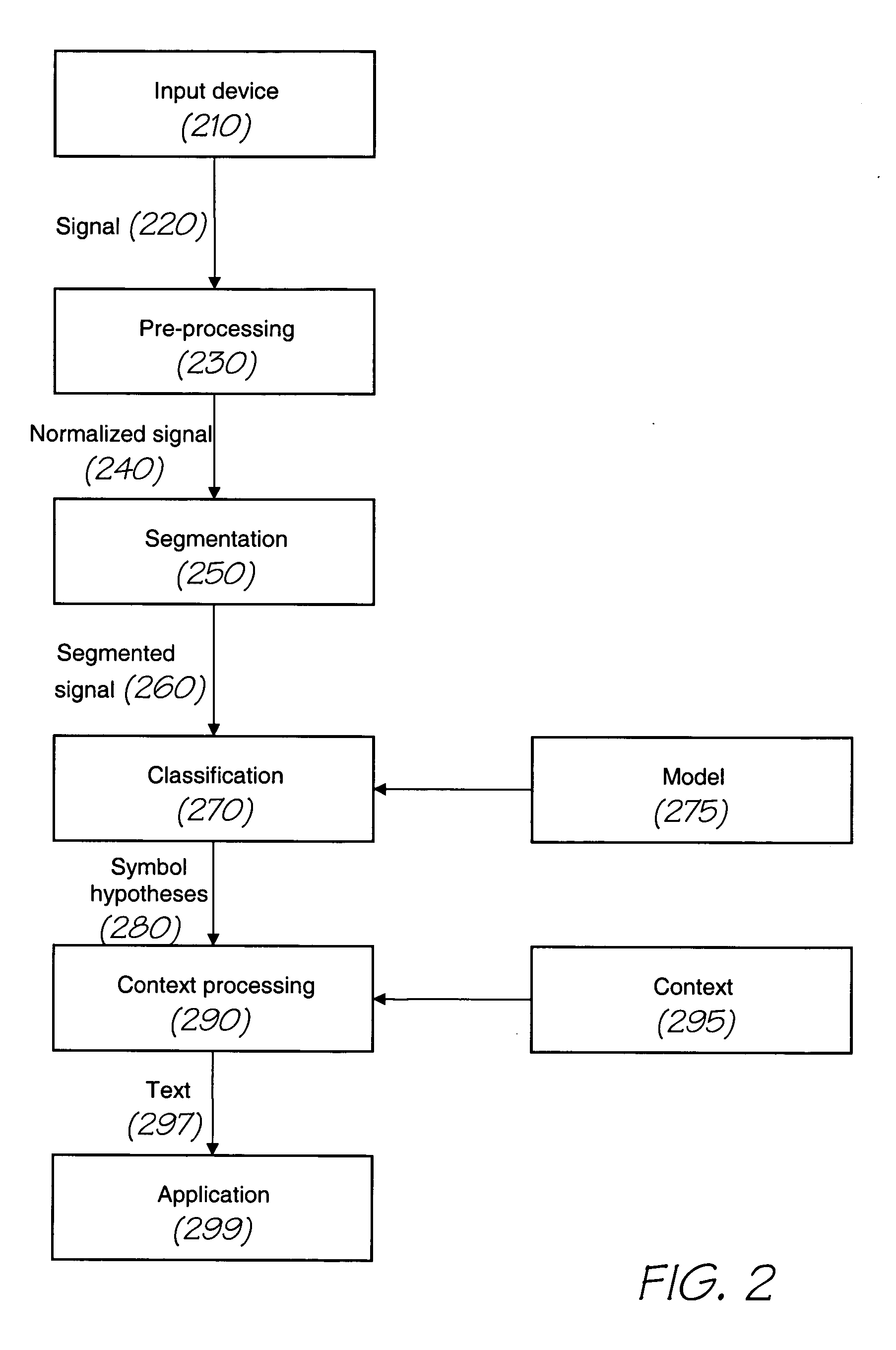Natural language recognition using distributed processing
a distributed processing and natural language technology, applied in the field of natural language recognition, can solve the problems of inherently ambiguous domain of many pattern recognition systems, inability to accurately and accurately detect and decode errors, and high cost and frustration for users, so as to achieve the effect of flexible pattern recognition systems
- Summary
- Abstract
- Description
- Claims
- Application Information
AI Technical Summary
Benefits of technology
Problems solved by technology
Method used
Image
Examples
Embodiment Construction
The following modes, given by way of example only, are described in order to provide a more precise understanding of the subject matter of the present invention.
A particular embodiment of the present invention can be realised using a processing system, an example of which is shown in FIG. 3. In particular, the processing system 300 generally includes at least one processor 302, or processing unit or plurality of processors, memory 304 and at least one output device 308, coupled together via a bus or group of buses 310. At least one storage device 314 which houses at least one database 316 can also be provided, which may be remote and accessed via a network. The memory 304 can be any form of memory device, for example, volatile or non-volatile memory, solid state storage devices, magnetic devices, etc. The processor 302 could include more than one distinct processing device, for example to handle different functions within the processing system 300.
Input device 306, for example ...
PUM
 Login to View More
Login to View More Abstract
Description
Claims
Application Information
 Login to View More
Login to View More - R&D
- Intellectual Property
- Life Sciences
- Materials
- Tech Scout
- Unparalleled Data Quality
- Higher Quality Content
- 60% Fewer Hallucinations
Browse by: Latest US Patents, China's latest patents, Technical Efficacy Thesaurus, Application Domain, Technology Topic, Popular Technical Reports.
© 2025 PatSnap. All rights reserved.Legal|Privacy policy|Modern Slavery Act Transparency Statement|Sitemap|About US| Contact US: help@patsnap.com



